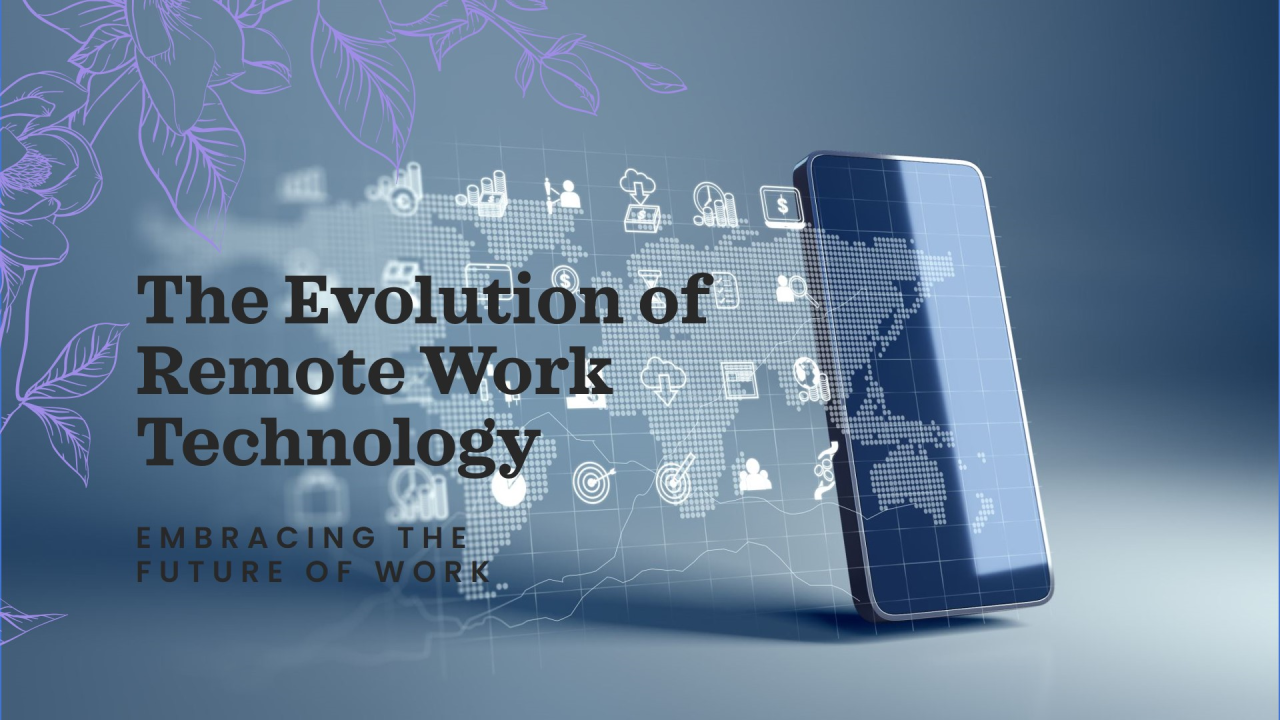The global shift toward remote work was accelerated by the COVID-19 pandemic, but its roots trace back much earlier. Advances in technology and IT infrastructure have transformed the way people work, collaborate, and communicate across the globe. By 2025, remote work has become not just a temporary solution but a permanent component of modern workplaces.
This article explores the evolution of remote work technology, its benefits, challenges, and the tools shaping its future.
The Early Days of Remote Work
Before the internet, remote work was limited to specific roles, often relying on fax machines, landline telephones, and postal mail. The 1990s saw the rise of dial-up internet, enabling basic email communication and file sharing. However, slow connections and limited access kept remote work minimal.
The Internet Revolution
With broadband internet in the 2000s, remote work gained traction. Employees could now:
- Access shared files online
- Use instant messaging platforms (like MSN Messenger, Yahoo Messenger)
- Participate in video calls, though quality remained low
This era laid the foundation for digital collaboration.
The Cloud Computing Era
The rise of cloud services in the 2010s changed everything. Tools like Google Drive, Dropbox, and Microsoft OneDrive made it possible to:
- Store and share large files instantly
- Collaborate in real time
- Access work from any device
Cloud technology eliminated geographical barriers, enabling companies to expand globally.
The Pandemic Acceleration
COVID-19 in 2020 acted as a catalyst. Millions of employees were forced to work from home overnight. This led to explosive growth in platforms like:
- Zoom – video conferencing
- Slack – team communication
- Microsoft Teams – all-in-one collaboration
Organizations quickly invested in remote work infrastructure, recognizing its long-term value.
Key Technologies Powering Remote Work in 2025
1. Video Conferencing & Collaboration Tools
- Zoom, Google Meet, Teams, and Webex dominate.
- Features like AI transcription, noise cancellation, and virtual backgrounds enhance user experience.
2. Cloud-Based Project Management
- Tools like Trello, Asana, and Monday.com help teams stay organized.
- AI-driven insights improve task prioritization and productivity.
3. Virtual Desktops
- Employees can log into secure company environments from any device.
- Ensures cybersecurity while enabling flexibility.
4. Cybersecurity Solutions
- VPNs, Zero Trust frameworks, and biometric authentication protect data.
- Remote workers are trained in phishing prevention.
5. VR & AR Workspaces
- Virtual offices simulate real-world interactions.
- AR helps in training, design, and remote troubleshooting.
Benefits of Remote Work Technology
- Flexibility – Employees can work from anywhere.
- Cost Savings – Companies save on office space and utilities.
- Global Talent Access – Businesses can hire the best talent regardless of location.
- Sustainability – Reduced commuting lowers carbon emissions.
Challenges of Remote Work
- Communication Barriers – Lack of in-person interaction may hinder team bonding.
- Security Risks – More devices and networks mean more vulnerabilities.
- Work-Life Balance – Employees may struggle to separate work from personal life.
- Digital Fatigue – Over-reliance on virtual meetings can lead to burnout.
The Future of Remote Work
- AI Assistants: Smarter scheduling, automated reporting, and enhanced productivity tracking.
- Hybrid Work Models: A balance of in-office and remote work.
- Metaverse Offices: Companies experimenting with 3D virtual office spaces.
- Global Workforce Integration: Seamless collaboration across time zones through automation and AI tools.
Conclusion
The evolution of remote work technology reflects how IT continues to redefine the workplace. From fax machines to AI-powered collaboration tools, remote work has become a cornerstone of modern business. While challenges exist, the future points to an even more connected, flexible, and innovative workforce powered by emerging technologies.
SEO Keywords: remote work technology 2025, future of work, cloud collaboration tools, remote work benefits, evolution of remote work, hybrid work model.
